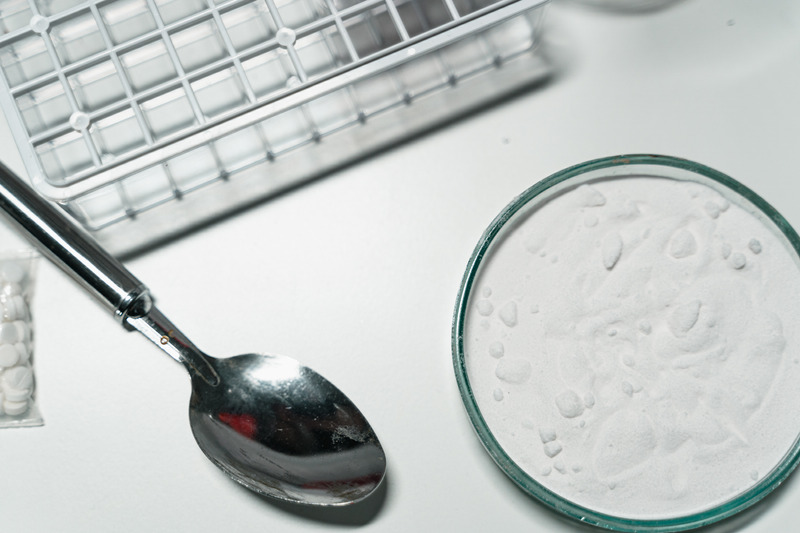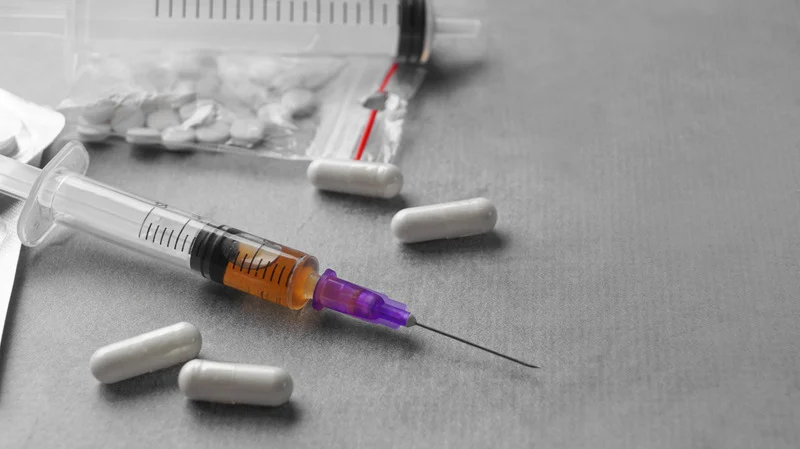The desire for speed, efficiency and ecstasy often motivate some people to combine cocaine, adderall and other prescription drugs. Knowing the risks associated with this deadly combination can help reduce the number of people willing to give it a shot.
Table of Contents
ToggleKnowing the Risks of Mixing Adderall and Cocaine
In recent years, there’s been a concerning rise in the misuse of Adderall, a prescription medication for ADHD, combined with cocaine. Statistics from the National Centre for Drug Abuse Statistics state that young adults aged 18 to 25 are most likely to misuse prescription drugs with 14.4%. In fact, 4.4% of high school seniors reportedly consumed Adderall for nonmedical purposes.
Adderall is a prescription medication primarily used to treat attention deficit hyperactivity disorder (ADHD), and cocaine, on the other hand, is an illicit stimulant derived from the coca plant.
Both exert powerful effects on the brain and body and when used together, they can amplify risks far beyond those posed by either substance alone.
In American society, where the abuse of controlled substances is prevalent, this dangerous combination has not only contributed to a rise in substance use disorders but has also led to severe health consequences and societal burdens.
Watch the following video to learn how Harmony Junction Recovery can help:
What are the Effects of Mixing Cocaine and Adderall?
Adderall and cocaine are both stimulants, but they work in slightly different ways. Adderall increases the levels of dopamine and norepinephrine in the brain, leading to improved focus, alertness, and energy. Cocaine, on the other hand, is an illegal street drug that primarily affects dopamine, creating feelings of intense euphoria and alertness.
While both substances can initially enhance focus and energy, the potential consequences of combining them are far from ideal. Here are some effects that they can cause:
- Seizures and Organ Damage: At high doses, the combined effects can trigger seizures and damage vital organs like the liver and kidneys.
- Heightened Cardiovascular Strain: Both substances put immense pressure on the heart, increasing heart rate and blood pressure. Combining these stimulant properties can cause severe cardiovascular issues such as a dangerous spike, potentially causing heart attack, stroke, or even sudden death.
- Increased Risk of Psychosis: Cocaine may trigger paranoia and hallucinations, and the intake of Adderall increases these issues, potentially leading to severe mental health episodes.
- Erratic Behavior and Addiction: The combined effects can lead to impulsive and unpredictable behavior, increasing the risk of accidents, injuries, and addiction.
Signs of Adderall and Cocaine Addiction

If you’re concerned about your own or someone else’s potential addiction to Adderall and cocaine, the symptoms they exude can be a telltale sign. The best way to nip addiction in the bud is to identify the signs as quickly as possible and get help to curb them before they spiral out of control.
Known Side Effects of Adderall Misuse
Misusing Adderall, whether you have ADHD or not, can lead to a variety of negative consequences. Here are some common side effects to be aware of:
- Behavioral Effects: Increased irritability and anger, changes in sleep patterns (insomnia or excessive sleepiness), social withdrawal, neglecting responsibilities, secretive behavior, financial problems.
- Psychological Impacts: Anxiety, paranoia, mood swings, depression, psychosis (in severe cases), increased risk-taking behaviors, obsessive thoughts about obtaining Adderall.
Also, chronic misuse and overdose of Adderall can lead to addiction, heart problems, stunted growth in adolescents, and potential for psychosis. It can also worsen existing mental health conditions.
Ironically, misusing Adderall can actually worsen ADHD symptoms in the long run. Constant stimulation can lead to tolerance, meaning higher doses become necessary to achieve the desired effect. This can disrupt the natural balance of brain chemicals and make it harder to manage ADHD symptoms without medication.
Known Side Effects of Cocaine Addiction
Cocaine addiction has devastating consequences for both the body and the mind. Some effects begin immediately after the habit is formed, others unravel with constant usage. Here are the leading ones:
- Immediate effects: Increased heart rate and blood pressure, euphoria (followed by intense cravings), heightened alertness, dilated pupils, constricted blood vessels, nausea, vomiting, tremors, difficulty breathing.
- Long-term effects: Severe heart damage, increased risk of stroke and heart attack, respiratory problems (including lung damage), seizures, psychosis, depression, anxiety, paranoia, hallucinations, weight loss, malnutrition, impaired cognitive function, damaged nasal passages (from snorting), increased risk of infectious diseases (from sharing needles).
Cocaine Addiction vs. Adderall Addiction
Here are the top differences between adderall and cocaine addiction:
| Sign/Symptom | Cocaine Addiction | Adderall Addiction |
| Behavioral | Increased aggression, risky behavior, social withdrawal, compulsive drug-seeking | Irritability, anxiety, social withdrawal, compulsive drug-seeking |
| Psychological | Paranoia, hallucinations, psychosis, depression | Hallucinations (at high doses), psychosis, depression, anxiety |
| Physical | Increased heart rate and blood pressure, constricted blood vessels, tremors, nausea, weight loss | Increased heart rate and blood pressure, insomnia, changes in appetite, weight loss |
| Long-term health risks | Severe heart damage, stroke, respiratory problems, seizures, malnutrition | Heart problems, stunted growth (in adolescents), impaired cognitive function |
How Adderall and Cocaine Can Affect Your Brain?
Both Adderall and cocaine are central nervous system stimulants that primarily target the brain’s reward system, leading to feelings of pleasure, focus, and alertness. However, they achieve this effect through different mechanisms.
Cocaine blocks the reuptake of dopamine, flooding the brain with this “feel-good” chemical and creating intense euphoria. Similar to Adderall, cocaine also stimulates the CNS, but with a stronger and more immediate effect.
Adderall primarily affects dopamine and norepinephrine, neurotransmitters linked to focus, alertness, and motivation. It works by blocking their reuptake into neurons, essentially extending their function and leading to increased energy and concentration.
Short term risks
Here are the almost immediate effects on the brain when a person consumes cocaine mixed with Adderall:
- Increased heart rate and blood pressure
- Heightened anxiety and paranoia
- Erratic and risky behavior
- Seizures:
- Heatstroke
Long-term consequences
Combining Adderall and cocaine is playing a dangerous game with your physical and mental health. Long-term effects of the combo are typically dangerous and harder to curb. Here are some of them:
- Neurological damage
- Increased risk of psychosis
- Cardiovascular problems
- Addiction and dependence
- Mental health problems
Battling Adderall and Cocaine Mix Overdose
Every second counts in an overdose situation. The individual needs to get medical attention as soon as possible. Here is a detailed guide on what you should do as a bystander in an Adderall and Cocaine mix overdose:
- Call 911 immediately. Do not hesitate, even if symptoms seem to subside.
- Check for breathing and pulse.
- If the person is unconscious, place them on their back and open their airway.
- If possible, try to gather information about the substances the person may have taken and any underlying medical conditions they might have.
- Do not give the person anything to eat or drink.
- Stay with the person until help arrives.
You must never attempt to treat an overdosed individual by yourself. Even if the person appears to be recovering, immediate medical attention is crucial. Medical professionals can stabilize the person’s condition and administer necessary treatment.
Medical Insights and Case Studies of Adderall and Cocaine Misuse

The statistics we see every day are more than mere numbers. They are an insight on how much of a real problem cocaine and Adderall misuse can be and how much they can mess people up. Here’s a look at what happens to some famous people who went down this path:
Real Stories
Reality TV star Jackson Michie’s story reveals the internal struggle of maintaining a public image while battling addiction. He describes a period where he mixed Adderall and cocaine, initially seeking an extra boost of energy for his active lifestyle.
While the initial high provided a surge of confidence and alertness, it was soon followed by intense paranoia and anxiety. Jackson’s relationships suffered as he became withdrawn and suspicious, pushing loved ones away.
His story emphasizes the psychological toll of this combination. The artificial energy boost came at a cost, creating a constant state of fear and mistrust, jeopardizing the very relationships that provided him with support.
Singer Demi Lovato has also been open about her struggles with addiction, including mixing Adderall and cocaine. She’s talked about how much it messed up her body. She’s even been to the hospital a bunch of times because of it. Demi’s story is a reminder that this mix can be life-threatening. She’s gotten help and is doing better now. This is proof that there’s always hope, even after things get bad.
Medical Research
Professor Woody Caan, a public health expert, offered valuable insights into the dangers of mixing cocaine with prescription drugs.
Caan, in his research report, confirms that both Adderall and cocaine are stimulants with overlapping effects on mood, alertness, and brain chemistry. However, he points out the difference in their duration of action. Adderall’s longer half-life means the “high” can last much longer than with cocaine, potentially leading to a drawn-out and unpleasant experience.
As Dr. Caan emphasizes, the impact of combining these drugs depends heavily on the dosage of each substance taken. A low dose for a first-time user might result in an additive effect, while a higher dose for a regular user could lead to a dangerous overdose.
Individuals with a history of drug use, particularly stimulants, will likely experience different effects compared to someone who is drug-naive. Tolerance builds quickly, making them less susceptible to the initial euphoria but more at risk of severe consequences.
His research suggests that despite their similarities, some users might prefer cocaine over Adderall, possibly due to cost or personal experience. Also, the concept of “priming” is introduced, where prior exposure to one stimulant can amplify the effects of the other upon later use.
Dr Caan’s research suggests that substituting prescribed amphetamines for former cocaine users might not be the best approach due to the potential for seizures and other complications.
Addiction Treatment Plan and Options
Addiction is a disease, and there is absolutely hope for those struggling with addiction to Adderall and cocaine. Professional help and proven recovery programs can equip you with the tools and support needed to overcome addiction and build a healthy future.
These treatment options work synergistically to address the physical, psychological, and social aspects of addiction. Here are some effective options available:
- Detoxification (Detox): This medically supervised program helps safely manage withdrawal symptoms as the body eliminates the drugs. Cocaine detox is often the first step in the recovery process.
- Individualized Therapy: Addiction specialists use various therapeutic approaches like cognitive behavioral therapy (CBT) to address underlying issues, develop coping mechanisms, and prevent relapse.
- Group Therapy: Connecting with others struggling with similar challenges can provide support, accountability, and a sense of community during recovery.
- Medication-Assisted Treatment (MAT): Certain medications can help manage cravings and withdrawal symptoms, particularly for those struggling with cocaine addiction.
- Contingency Management: This behavioral therapy strategy uses positive reinforcement to reward abstinence from drug use.
- Relapse Prevention Planning: Developing a personalized plan to identify relapse triggers and strategies to cope with them effectively is crucial for long-term recovery.
- Support Groups: 12-step programs like Narcotics Anonymous (NA) offer ongoing support, mentorship, and a sense of belonging throughout the recovery journey.
Preventive Measures
Here are some preventive measures we can take to help curb the increase of cocaine and Adderall mix in our society:
Creating a Safe Space for Communication: It’s important that young ones have a safe space where they can openly communicate both at home and in school. Parents can create a safe space for their children to ask questions and express concerns about drugs and substance abuse. Also, schools can implement age-appropriate programs that educate young people about the dangers of commonly abused drugs and the realities of addiction.
Spreading Awareness: Education is a key weapon in this fight. Targeted programs in schools and communities can equip young people with the knowledge they need to make informed choices.
Safeguarding Prescription: If you have ADHD and rely on Adderall, be sure to discuss any concerns you have about side effects or potential for misuse. Never stray from the prescribed dosage, and remember, these medications are for you and should never be shared or sold. If you have any questions about the usage of your medication, schedule regular checkups with your doctor.
How an Inpatient Treatment Can Help You Heal
If you’re ready to reclaim your life, inpatient treatment can provide a safe and supportive environment to break free from addiction and begin the healing process. Here’s how:
Structured Environment
Inpatient treatment provides you with an environment that is free from triggers and temptations. You’ll reside in a structured facility designed to support your recovery.
Daily routines, regular meals, and scheduled activities create a sense of normalcy and stability, fostering a sense of calm and focus on healing.
This structured environment also eliminates access to drugs and the people or places associated with your addiction.
Professional Support
You won’t be alone on this journey. Inpatient treatment centers house a team of dedicated professionals, including doctors, nurses, therapists, and counselors.
They provide 24/7 medical supervision to manage withdrawal symptoms and any underlying medical conditions. Therapists use evidence-based approaches such as CBT to address the root causes of your addiction and equip you with coping mechanisms to prevent relapse.
Comprehensive Care
Inpatient treatment goes beyond just addressing addiction. It offers a holistic approach to healing, focusing on your physical, mental, and emotional well-being.
You’ll likely participate in individual therapy sessions, group therapy sessions that provide peer support, and educational workshops to learn about addiction and relapse prevention.
Nutritional counseling can ensure you’re getting the right nutrients to support your recovery, and some facilities may even offer complementary therapies like yoga or meditation to promote relaxation and stress management.
Inpatient Treatment vs. Outpatient Care
While both inpatient and outpatient treatment programs can be effective, inpatient care offers a more intensive and structured approach. Here’s a comparison to help you decide which option might be best for you:
| Inpatient Treatment | Outpatient Treatment |
| Structured, removed from triggers | Less structured, remains in usual environment |
| 24/7 medical and mental health support | Regular appointments with therapists and doctors |
| Often provided under medical supervision | May require separate medical detox program |
| Close-knit support from peers and staff | Relies more heavily on external support systems |
| Minimal distractions; focus solely on recovery | More potential for distractions from daily life |
| Easier to implement new routines in a structured setting | Requires more self-discipline to integrate changes into daily life |
| Generally more expensive | Typically less expensive |
| Ideal for ndividuals with severe addiction, those with a high risk of relapse, or those lacking a strong support system at home. | Ideal for individuals with moderate addiction, those with a strong support system at home, or those who have work or family obligations that make inpatient care difficult. |
Harmony Junction Recovery is the Right Choice For You
So far, you’ve read about the dangers of Adderall and cocaine addiction, the challenges of withdrawal, and the immense power of recovery. Perhaps you see yourself reflected in these pages and you’re yearning for a life free from the grip of these substances.
At Harmony Junction Recovery, we see the strength beneath the struggle. We believe in your capacity to heal and reclaim your life.
We know the intense cravings, the distorted thinking, and the overwhelming sense of isolation. That’s why our programs are meticulously tailored to address these issues head-on.
Our team of specialists isn’t here to judge. They’re here to guide you through detox, support you in therapy sessions, and equip you with the tools you need to manage cravings and prevent relapse.
Our programs aren’t cookie-cutter. We understand that your journey with addiction is unique. That’s why we tailor our evidence-based treatments and holistic therapies to address your specific needs, from the root causes of your addiction to the anxieties that fuel relapse.
Don’t wait another day. Reach out to us today to start your personalized path to lasting sobriety.
Clint earned a Master of Science in Clinical Psychology in 2012. With 5 years in drug and alcohol treatment and 8 years in private practice, he specializes in helping clients uncover obstacles to living their envisioned life. Leveraging his experience, Clint supports clients in finding the motivation to make meaningful life changes.
Follow him on: Linkedin
Get support : Clint Website
